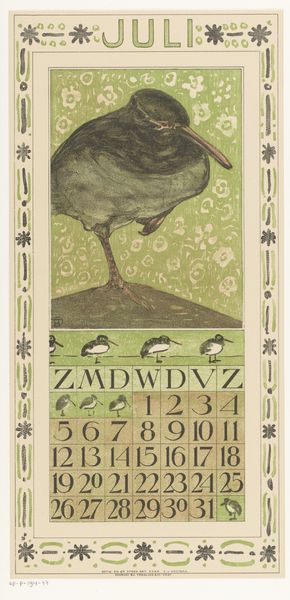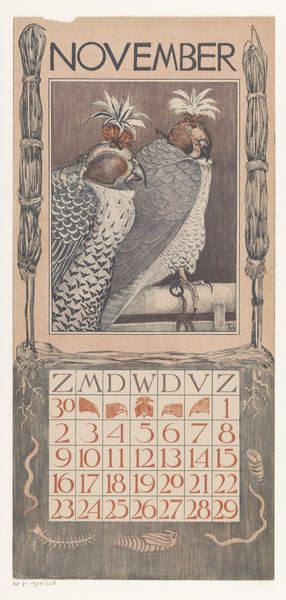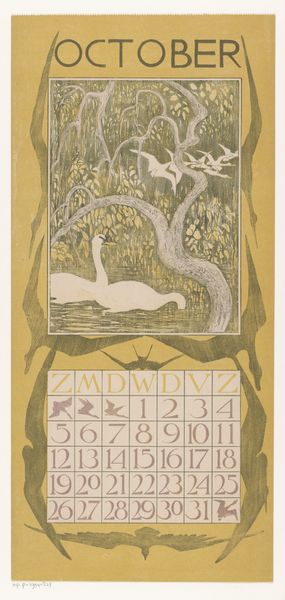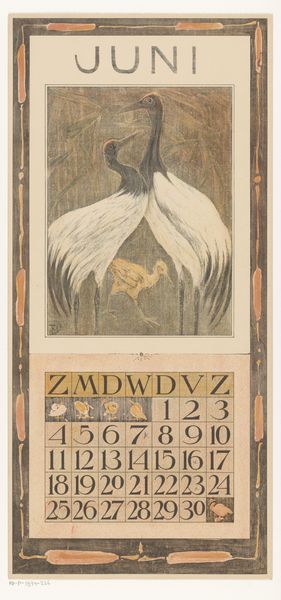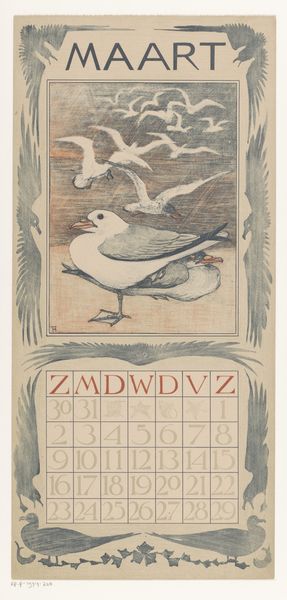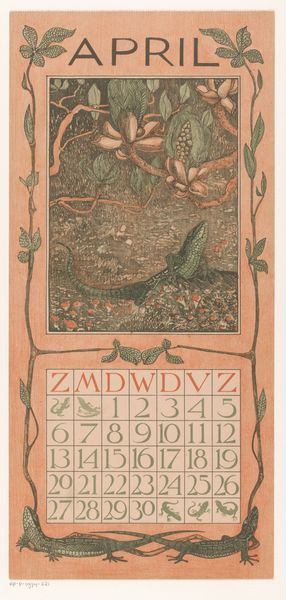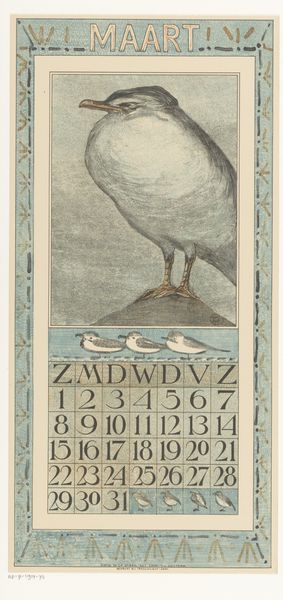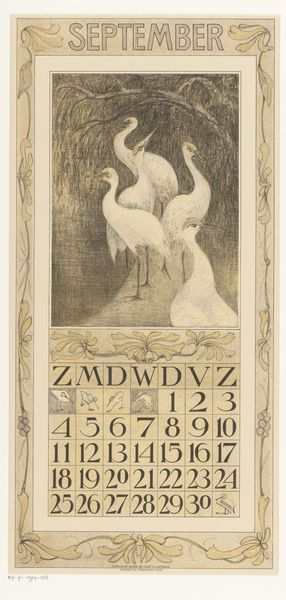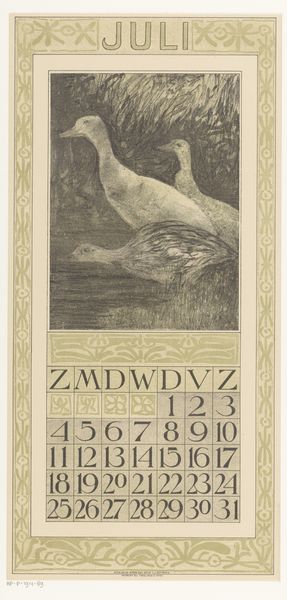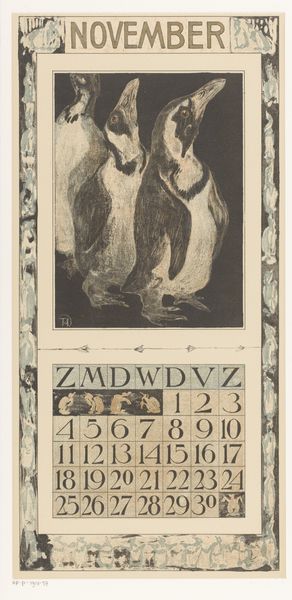
print, linocut, poster
#
art-nouveau
# print
#
linocut
#
old engraving style
#
landscape
#
linocut print
#
symbolism
#
poster
Dimensions: height 375 mm, width 241 mm
Copyright: Rijks Museum: Open Domain
Editor: Here we have Theo Nieuwenhuis’s “Kalenderblad voor juni 1896,” a print made around 1895. The subdued palette and intricate linework give it an almost haunting beauty. What strikes you most about this piece? Curator: What interests me is the process by which this image became so widely available. This wasn't created for a high art context. Consider the linocut technique – relatively inexpensive and easily reproduced, it speaks to the democratization of art fostered by the Art Nouveau movement. How does mass production shape our perception of the image itself, when something designed to be widely distributed enters the museum space? Editor: That’s fascinating! So, you’re suggesting that the medium itself challenges our traditional ideas about the value of art? Curator: Precisely. Look at the integration of function – it's a calendar – blurring the lines between art and everyday life. The question is: does its purpose as a functional object influence how we appreciate the image's aesthetic qualities? Moreover, how would an artisan at the time perceive the division between applied and fine arts? Editor: It's easy to see it only as art now, removed from its original function. It must have been something completely different to view in someone’s home! Curator: Yes, the poster was consumed daily. Now, under glass, we dissect it as a piece of "art." Consider the labor involved in the intricate linocut; Nieuwenhuis and his contemporaries challenged established hierarchies, promoting the value of craft and accessible artistry. What would daily life be like, immersed in the beauty created through production processes like linocut print? Editor: This makes me appreciate not just the aesthetic but also the social impact of the work so much more. It definitely pushes against the traditional definition of ‘art’. Curator: Exactly. Thinking about art as tied to material processes reveals how entwined artistic expression and production are. It opens a completely different set of possibilities.
Comments
No comments
Be the first to comment and join the conversation on the ultimate creative platform.
